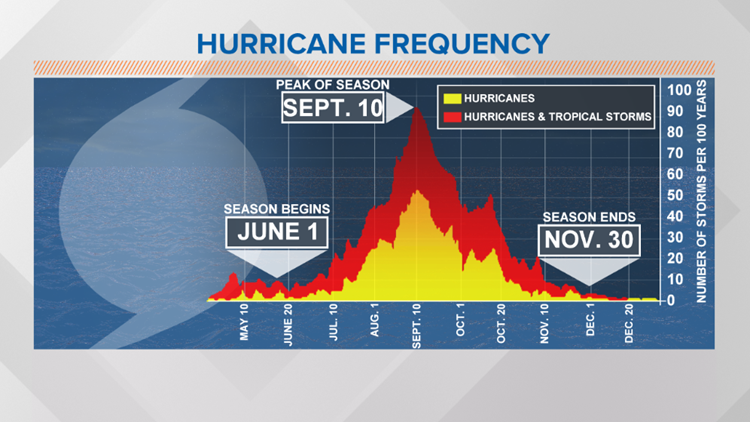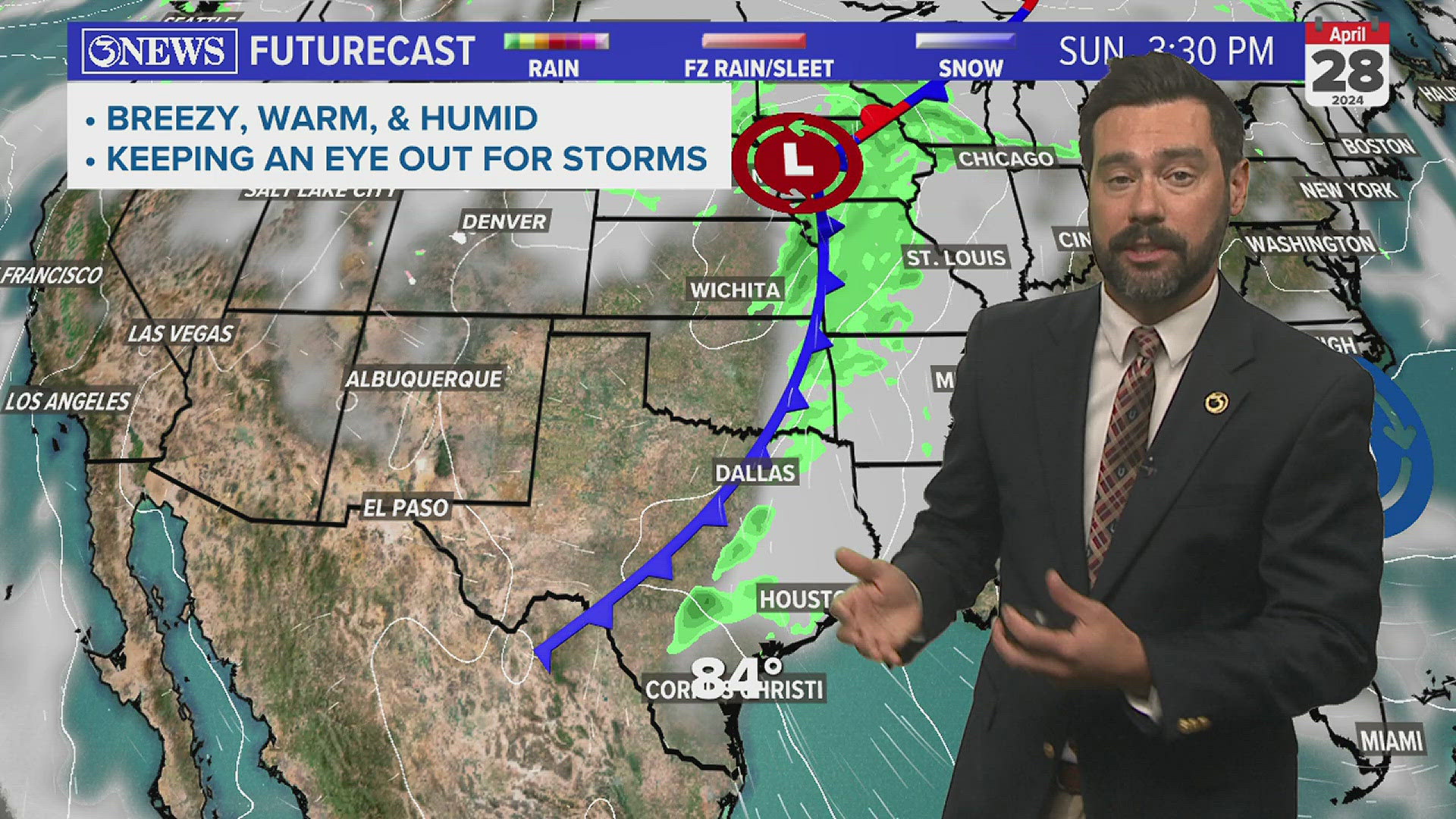
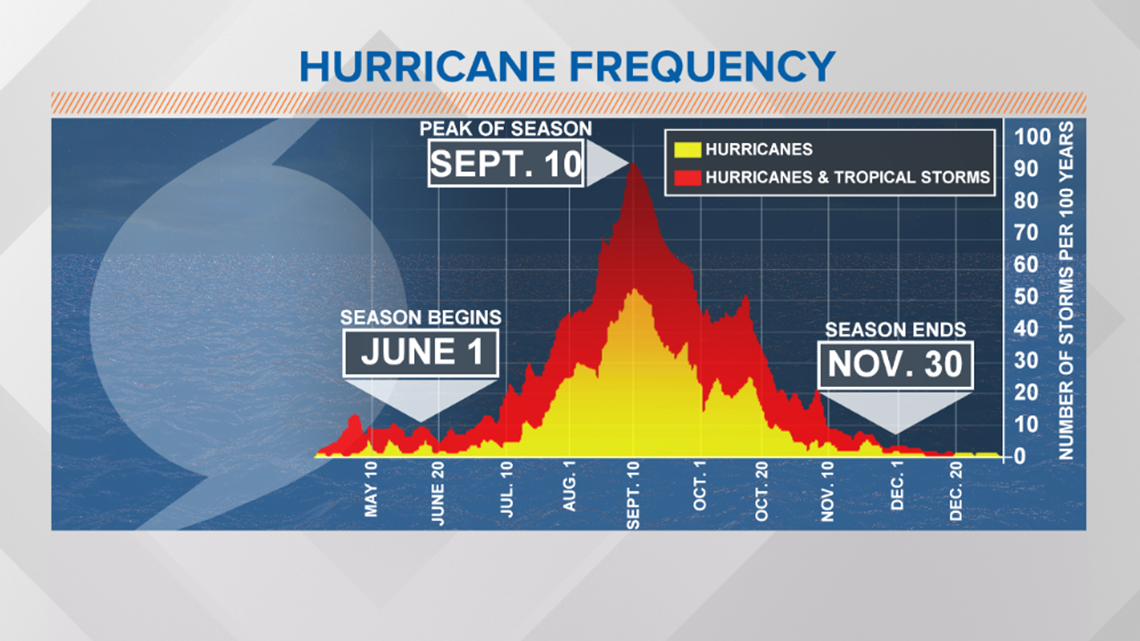
CORPUS CHRISTI, Texas — The 2020 Atlantic Hurricane Season wraps up today (Nov. 30) and I am thankful to have it behind us. This was a historic season in more ways than one. There were 30 named storms, reaching Iota in the Greek Alphabet. The previous record for number of named storms was 28, set in 2005. Note: while not terribly common, tropical activity can still pop up in December, so the final 2020 numbers may change.


Of the 30 named storms in 2020, 13 reached hurricane status and 6 attained major hurricane strength - that's category 3 or higher. An 'average' year's activity is 11 named storms, 6 hurricanes, and 2 major hurricanes. 2020 was on steroids, to say the least.
As far as the Earth is concerned, tropical systems are the Earth's way of trying to balance its heat budget - it's always trying to reach an equilibrium with its temperature. Tropical systems do this by sending heat energy from the equator toward the poles. This heat energy is measured by a metric called Accumulated Cyclone Energy - or, ACE for short. When looking at this year's ACE, you can see it is also above average for 2020.

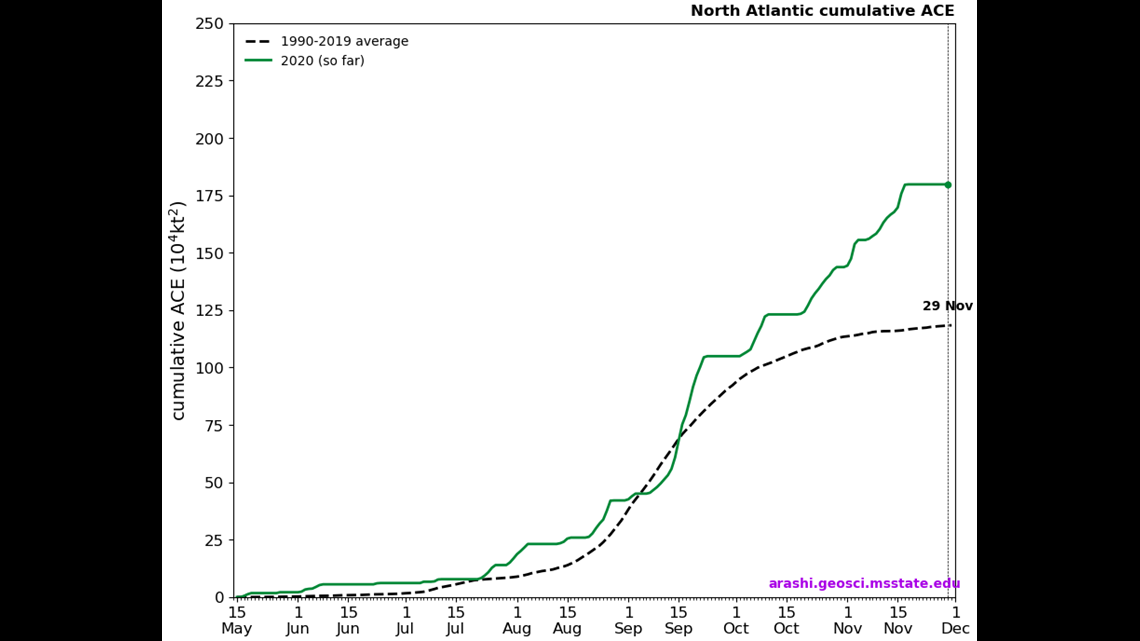
Amongst the many other ways the 2020 Atlantic Hurricane Season was historic - the amount of U.S. landfalls. The United States had 12 named storms hit. That breaks the old record of 9 in 1916. Of note, Louisiana had FIVE named storms hit with category 4 Laura being the strongest of them. Laura was also the strongest storm to hit the US in 2020.
The Coastal Bend had two near misses. Hanna in late July hit as a category one hurricane near Port Mansfield to our south. Tropical Storm Beta hit the Central Texas Gulf Coast in September, just north of the Coastal Bend.

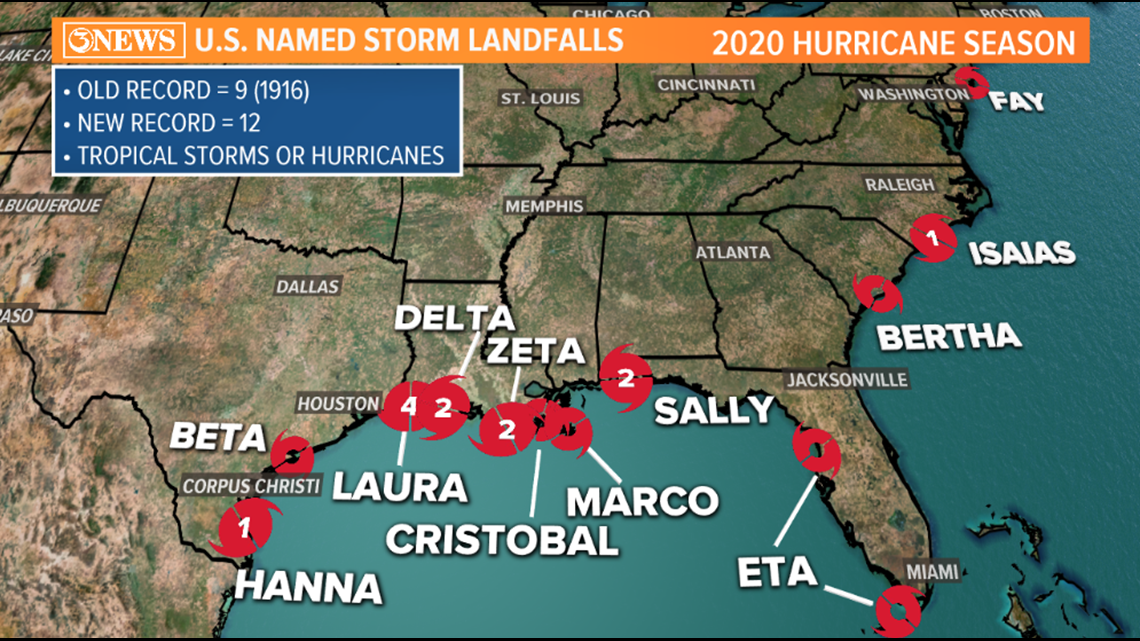
*****After this year, I have two ways of thinking that need to be put to bed.*****
CLAIM 1 - "Storms can't hit the same spot in a short amount of time"
Tropical systems can and do hit the same areas in a short amount of time (a few weeks or less). They can also track over the same area of water within in a short amount of time, unimpeded when waters are warm enough. So, the thinking that an area is immune after a tropical system hitting is false. We saw that numerous times this year - the most glaring examples being the Eta and Iota - back to back major hurricanes hitting a nearly identical location 2 weeks apart in Central America; and Laura/Marco in the gulf. So, if a storm hits, thinking another storm can't come in a short time should not be how to think - it's completely dependent on the current forecast; however, it is true that the odds of back to back storms hitting the same area are pretty low.
CLAIM 2 - "The first cold front means the end of Hurricane Season, locally"
This line of thinking is a common one in the Coastal Bend. The first cold front comes through and everyone claims 'the end of hurricane season has arrived!' This year, we had a cold front move through, stall in the gulf, and then Beta move in; interacting with the same front. All it would have taken was for that front to be a little farther south and Beta could have come toward the Coastal Bend. Stalled cold fronts in the gulf can often provide a fertile breeding ground for tropical activity. While it is true that cold fronts deflect storms away and more numerous fronts can mean the end of tropical threats, to think that a single cold front ends hurricane season is false, in my opinion; especially when that cold front is in early or middle September.
- These two thoughts often ring true, but it's more because the statistical odds of these happening are very low. Not because it can't happen meteorologically.
- Holt, out

